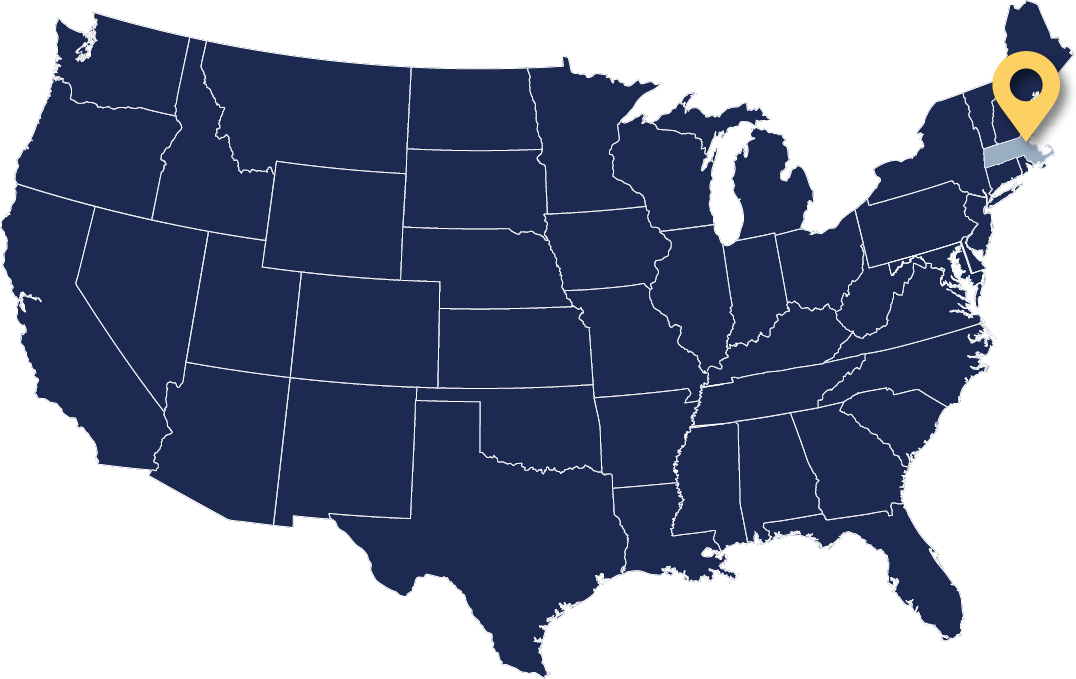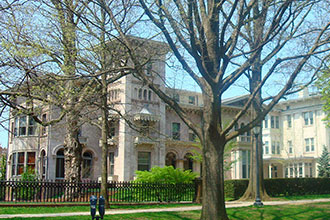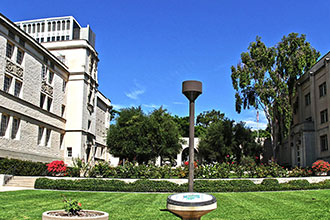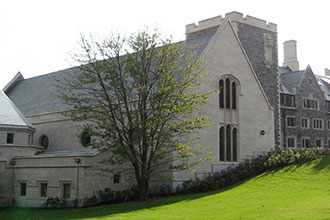MASSACHUSETTS INSTITUTE OF TECHNOLOGY
REQUIREMENTS AND CAMPUS GUIDE
School Name: Massachusetts Institute of Technology
School Location: Cambridge, MA
School Type: Private Research Institute
Massachusetts Institute of Technology Admissions Rates Class of 2026
Applications: 33,796
Admitted: 3.96%

General Info
SAT/ACT Scores
Test Optional for 2021-2022
Admission Cycle
Fall 2020 Test Scores
Evidence-based Reading & Writing Range: 730-780
SAT Math Range: 790-800
ACT Range: 35-36
Dates/Deadlines
Early Action: November 1
Early Results: Mid-December
Regular Deadline: January 4
Regular Results: Mid-March
School Information
Schedule: 4-1-4
Curriculum Type: General Education
Greek Life: Yes
Athletics: D3
Massachusetts Institute of Technology TIPS & GUIDE
MIT Application Requirements, Admissions Tips, and University Guide
Massachusetts Institute of Technology is the highest ranking technical institute in the U.S.. It’s a home to innovators and scientists, and maybe even you some day! Here’s everything you need to know about MIT:
Where is MIT?
MIT is a 166 acre university in Cambridge, MA. It’s just across the bridge from Boston, and just down the road from Harvard. The campus has more than 20 gardens and green spaces to soak up the sun when you’re not enduring one of those legendary New England winters. Cambridge is America’s oldest college town, and Boston is as equally college-friendly as its neighbor. Throughout the school year, there are events across the city that college students can enjoy, as well as easy transportation to New Haven, Providence, and New York for when you want to break out of the college bubble.
How do I apply to MIT?
MIT has both Early Action and Regular Action deadlines. Early applicants must submit their materials by November 1. Students applying in the Regular Action cycle need to do so by January 5. MIT IS NOT TEST OPTIONAL! In addition to filling out the MIT Application and submitting essays for all MIT supplements, students will have to submit one evaluation from a science or math teacher and one from a humanities, social science, or language teacher. You can also submit additional materials via fax (most ideal) or mail.
How hard is it to get into MIT?
MIT is a very selective university. Of the 33,796 students who applied to MIT, 1,337 were offered admission to the class of 2026. MIT accepted 697 of the 11,4781 students who applied for early admission.
Even though MIT is a STEM focused school where competitive test scores are a prerequisite for admission, they also care greatly about school fit. They want skilled scientists who want to make an impact in an area they are very passionate about, take risks, and work well with others. The most attractive candidates are those who demonstrate that they take initiative and ownership of their own learning and opportunities. This is because there are so many opportunities and research experiences to take ownership of once on campus.
MIT encourages interested applicants to attend an interview in their area or via Skype during the application process. These interviews last anywhere between 30 minutes and two hours. Although an interview is not mandatory and won’t make or break your application, interviews are a helpful tool for showing MIT what might make you unique and a potentially valuable member of their community.
What are academics like?
MIT consists of six schools, across which there are 56 majors and 58 minors. The six schools are School of Architecture and Planning, School of Engineering, School of Humanities, Arts, and Social Sciences, MIT Sloan School of Management, School of Science, and the MIT Schwarzman College of Computing. Unlike some other colleges, students don’t have to apply to a specific school. All MIT undergrads enter undeclared and choose a school during their sophomore year. That way, students have time to explore classes from all six schools and make an informed decision about which major is the best option for them. At MIT, you’ll be thankful you have a full year to decide on your major and minor. Some of the most popular areas of study are within Science and Math, but MIT offers everything from Ancient and Medieval Studies to Flexible Nuclear Science and Engineering. Many of the majors are also offered as minors, so if you’re interested in humanities, but primarily want a STEM degree, you can still pursue your passions in a consistent and intentional way.
Is MIT affordable?
The full price (including tuition, fees, room and board) of an MIT education for the 2022–23 academic year is $79,850. Like many top colleges, MIT is committed to helping students pay for their education. The university awards aid that meets 100% of demonstrated financial need, bringing the average total price paid by an MIT student receiving financial aid to about $17,986. Overall, 85% of students receive some type of financial aid including scholarships and work. MIT is one of only five U.S. universities that is need blind for both domestic and foreign students, meaning that they accept students regardless of their financial aid needs.
What is MIT’s student body like?
For the class of 2026, 44% of students are male, 43% of students were women. 40% are Asian American, 37% are White/Caucasian, 14% are Hispanic, 13% are Black/African American, and 2% are American Indian or Native Hawaiian. MIT students hail from all 50 states, 65 countries, and more than 900 different high schools.
What is campus life like?
You might think that a campus full of Nobel Prize-bound scientists would be really serious and a bit dull, but MIT is actually the complete opposite. MIT has an open campus, so while you might be in lecture halls with Nobel laureates and MacArthur fellows, when you step outside you’ll be greeted by jugglers and fire spinners alongside the tourists and other students. MIT’s museums and libraries are open to the public, so even those academic spaces are much more diverse than at a typical college campus.
All MIT freshmen must live in a residence hall, even if they choose to affiliate with an FSILG (Fraternity, Sorority, or Independent Living Groups). The summer before freshman year, students rank the ten residence halls in order of preference. If you end up in a residence hall you don’t love, you can apply to transfer dorms at the beginning of each year. For sophomore- senior year, students have the option to continue living in residential halls or move to an FSILG. More than half of undergraduates live on campus. Also, nearly half of MIT’s undergraduate students are affiliated with an FSILG, so you won’t be the odd one out if you choose to do so. Keep in mind that each of the residence halls and FSILGs vary in cost and have distinct cultures and rules.
Can I study humanities at MIT?
Can I study humanities at MIT?
Yes! In fact, it’s not just that you can study humanities at MIT, you actually have to. All MIT students must complete courses in the humanities, arts, and social sciences, as a part of the HASS requirement. HASS consists of eight subjects of at least nine units each in the humanities, arts and social sciences to be completed by the end of junior year. More than half of the undergraduates enroll in arts courses each year, so you won’t be alone if you pursue an interest in subjects other than STEM.
Fun fact: you also need to pass a swim test in order to graduate.
What other resources are offered at MIT?
- Enrichment program for new students
- More than 30 different club sports
- Over 500 student organizations
- Sports for our athletic friends
- Deshpande Center for students to move their ideas into the marketplace
- Priscilla King Gray Public Service Center for volunteering
- NEET- Engineering Program a collaborative and project based academic program for engineers
- Study resources for all students such as tutoring, talented scholar resource room, writing and communication center
- Venture Mentoring Service for entrepreneurial students
- Career Advising and Professional Development for guidance and support in internship and job searching
- MIT Undergraduate Research for yes you got it… Undergraduate research
- MIT Game Lab for students interested in games, interactive online courses, etc.
- MIT Media Lab for collaboration to create new technologies
MIT Admission Rates
| | Data Source | Admission Rate |
|---|---|---|
| Class of 2025 | CDS 2021-2022 | 4.11% |
| Class of 2024 | CDS 2020-2021 | 6.84% |
| Class of 2023 | CDS 2019-2020 | 7.11% |
| Class of 2022 | CDS 2018-2019 | 6.74% |
| Class of 2021 | CDS 2017-2018 | 7.17% |
MORE SCHOOLS TO CONSIDER

Yale University
New Haven, CT

California Institute of Technology
Pasadena, CA

Princeton University
Princeton, NJ
View All Schools ↓
| American Univ Amherst Brown Boston Univ CalTech Carnegie Melon Claremont McKenna Columbia Cornell Dartmouth Duke Emory Georgetown Georgia Tech Harvard Hopkins |
MIT NYU Northeastern Northwestern Notre Dame Princeton Rice Stanford Tufts Tulane UChicago UC Berkeley UC Davis UCLA |
UCSB UCSD UIUC UMich UNC UPenn Univ of Southern California UT Austin UVA Vanderbilt Villanova WashU Williams Wisconsin Yale |
*Updated 2022

